Often mothers do not pay special attention to the snot flowing from the baby's nose, especially if there is no temperature and severe cough... Say, immunity will work and everything will pass by itself. This irresponsible attitude often leads to very serious consequences. It is necessary to treat a runny nose, especially if the snot is thick, viscous and have a yellowish-green color! Moreover, to treat immediately and correctly. Since its very appearance is a clear signal that something has gone wrong in the body. There are many ways how to cure thick snot in a child, but only a pediatrician should select them - improper treatment can aggravate the course of the disease.
How to find out the reason
Before embarking on a thorough treatment, it is necessary to determine the reason why the child has a thick runny nose at all. By the way, the color and consistency of the secretions may partially indicate it:
- Viscous in a child suggests that if an infection is present in the body, then it has penetrated shallowly and it will be easy to deal with it even folk methods treatment. In infants, such mucus can appear for a non-infectious reason. If the air in the room where the baby is constantly located is too dry, then the delicate mucous membrane dries out quickly. To moisturize it, the body secretes transparent, viscous mucus.
- Green stringy snot in a child always indicates that pathogenic bacteria are present in the mucus. It is they who, dying in large quantities under the attack of neutrophils, give the secretions such a color. You can fight them only with antibiotics - natural or safe medicines for the child. Such a runny nose is especially dangerous for infants - mucus infected with microbes can easily penetrate the ears and bronchi.
- Yellow viscous snot in a child may indicate the onset of inflammation of the frontal and maxillary sinuses, as well as the fact that the baby is sick for several days and his immunity is not able to overcome the disease on its own. If the symptom is left unattended, with almost 100% probability the next stage will be purulent sinusitis or frontal sinusitis, and there is not far to meningitis. Moreover, the more intense the color of the snot, the more acute the course of the disease. Bright yellow or bright orange colors are an indicator of an existing sinusitis.
In some cases, thick transparent snot the child may have an allergic character. If an allergen is constantly present in the air that irritates the mucous membrane, it protects itself by active secretion of mucus. Liquid snot immediately flows out and in this case does not perform a protective function.
With chronic allergies, they become thicker, viscous and are constantly present in the nose, making it difficult to breathe and creating ideal conditions for the development of pathogenic microflora.
Treatment methods
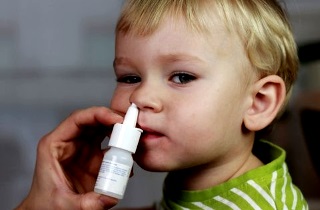 How to treat thick snot in a child depends solely on the cause that caused them. In the case of an infectious nature, antibiotics will most likely have to be used. Moreover folk remedies can help only at the first stage, when the infection has not yet penetrated deep into the respiratory tract. Many mothers are afraid to give antibiotics to babies, especially babies. But here you have to rely on the opinion of a specialist. Risk from complications caused by infectious diseases far exceeds the likelihood of side effects.
How to treat thick snot in a child depends solely on the cause that caused them. In the case of an infectious nature, antibiotics will most likely have to be used. Moreover folk remedies can help only at the first stage, when the infection has not yet penetrated deep into the respiratory tract. Many mothers are afraid to give antibiotics to babies, especially babies. But here you have to rely on the opinion of a specialist. Risk from complications caused by infectious diseases far exceeds the likelihood of side effects.
The pharmaceutical industry is not standing still. Antibacterial drugs of the latest generation have minimal side effects on the child's body, provided that the dosage and other conditions of admission are strictly observed. That is why only a pediatrician should prescribe how to treat thick snot in a child. And my mother's task is to follow all the doctor's prescriptions as clearly as possible.
For your reference, below is a list of drugs that are most often prescribed for children under 12 years of age. But the final choice medicines and their combinations should remain only for a specialist:
| Group of drugs | Popular titles | Main action |
| Antibacterial | Bioparox, Isofra, Polydex. | They kill pathogenic microflora, prevent further progression of the disease. |
| Vasoconstrictor | "Naphtizin", "Nazol", "Galazolin", "Otrivin". | Reducing the intensity of mucous secretions, eliminating puffiness, facilitating breathing. |
| For washing | "Aqualor", "Aquamaris", "Miramistin". | Anti-inflammatory and antiseptic action, cleansing the nasal passage from mucus. |
| Antiviral | "Anaferon", "Immunal", "Interferon". | They create unfavorable conditions for the multiplication of viruses, enhance the activity of the immune system. |
| Immunomodulators | Derinat, Grippferon, IRS-19. | They stimulate the production of leukocytes, strengthen the immune system. |
| Antihistamines | Diazolin, Tavegil, Claritin. | They relieve puffiness, reduce the amount of discharge, suppress the reaction to the allergen. |
In some cases, phytopreparations give a good therapeutic effect: drops based on vegetable oils "Pinosol", a solution of chlorophyllipt on an oil basis, aerosol with camphor oil "Kameton".
They can be used independently at home even before consulting a doctor. But if within the next two days there are no noticeable improvements, you need to switch to more intensive treatment.
Preventive measures
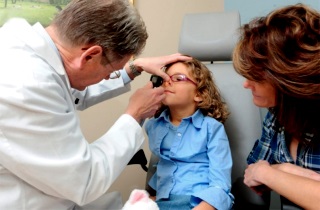 A healthy child with strong immunity is much less likely to suffer from colds. If such a baby has caught an infection transmitted by airborne droplets, his body is more likely to cope with the disease than a weakened one. Even when the child has thick snot, minimal treatment is required. Therefore, the main attention should be paid to preventive measures and strengthening the immune system. This is not difficult to do. It is necessary:
A healthy child with strong immunity is much less likely to suffer from colds. If such a baby has caught an infection transmitted by airborne droplets, his body is more likely to cope with the disease than a weakened one. Even when the child has thick snot, minimal treatment is required. Therefore, the main attention should be paid to preventive measures and strengthening the immune system. This is not difficult to do. It is necessary:
- provide the baby with natural food rich in vitamins and microelements;
- exercise and temper regularly;
- make sure that the child is in the fresh air for at least an hour every day;
- dress the baby in clothes made of natural fabrics according to the weather conditions;
- avoid hypothermia and overheating, being in a draft and under a working air conditioner;
- well ventilate and humidify the room in which the child is constantly located;
- appear in the clinic on time for preventive examinations.
And in no case self-medicate! Even if you are a supporter of natural and traditional medicine - consult a doctor.Many doctors now only welcome such methods, and they will be happy to advise you on the natural remedies that are most suitable for your child.
- The main stages of the common cold
- The therapy used
- Application of additional procedures
- The use of folk remedies
If thick snot appears in a child, treatment is carried out taking into account the baby's well-being and the type of runny nose. Distinguish between physiological and respiratory rhinitis.
The main stages of the common cold
In the first weeks of life, newborn babies develop light snot, which pass on their own after a few days. Rhinitis is treated when the disease is caused by bacteria and viruses.
A runny nose in children goes through the following stages:
- The appearance of liquid and transparent snot as a result of increased secretion of the inflamed mucous membrane or against the background of bacteria. The baby's general well-being worsens if the infection has entered the throat and respiratory system.
- The appearance of green and thick snot that causes difficulty breathing.
- The formation of a yellow secretion that irritates the nasal passages.
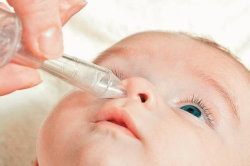
Thick and transparent snot appear with the development of pneumonia, bronchitis and allergies. Before treating thick snot in a child, it is recommended to find out the reason for their appearance. You cannot self-medicate, because each drug has contraindications and improper treatment can cause various complications.
A clear rhinitis is treated with vasoconstrictor drops. Taking into account other symptoms of the disease, the pediatrician selects the general treatment:
- antiviral agents;
- immunomodulators;
- drugs that relieve puffiness.
Liquid secretions can be sucked off in young children using an aspirator or a rubber bulb. This procedure reduces the likelihood of bacteria penetrating into other airways... Pediatricians do not recommend constantly using vasoconstrictor drops... Otherwise, the child will get used to them. Such funds are used for 3-5 days.
Back to the table of contents
The therapy used
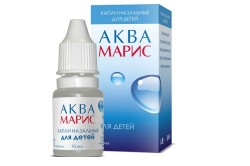 Treatment of thick secretions is carried out with medication and with the help of traditional medicine. Untimely therapy contributes to the transition of the inflammatory process to the sinuses. It is preliminarily recommended to liquefy the dense secret. To do this, use means based on sea water ("Aquamaris", "Humer", "Physiological solution").
Treatment of thick secretions is carried out with medication and with the help of traditional medicine. Untimely therapy contributes to the transition of the inflammatory process to the sinuses. It is preliminarily recommended to liquefy the dense secret. To do this, use means based on sea water ("Aquamaris", "Humer", "Physiological solution").
After 5-10 minutes, softened mucus is removed from the baby's nose. To do this, use small cotton filaments dipped in petroleum jelly or vegetable oil. If the snot is removed with a syringe without a needle, then you will need to fix the baby's head. Then antibacterial drops are instilled into the nasal passages.
It is recommended that you consult your doctor before treating coryza yellow. The pediatrician must determine the cause of the disease. The nose is preliminarily freed from mucus. Then vasoconstrictor agents are used, the nasal sinuses are washed. For local treatment, antibacterial or antihistamines are used. In severe cases of the disease, anti-inflammatory and antipyretic drugs based on paracetamol are prescribed.
If drug treatment ineffective, then they resort to surgical intervention.
With the help of a puncture, pus is removed, ensuring normal ventilation of the nasal passages.
Back to the table of contents
Application of additional procedures
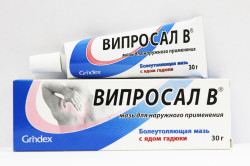 Green rhinitis is treated with medication. Airway clearance is performed before each nasal lavage. To do this, use pharmacy products or salt water prepared at home. For 1 liter of water, you will need 1 tbsp. l. sea \u200b\u200bor table salt.
Green rhinitis is treated with medication. Airway clearance is performed before each nasal lavage. To do this, use pharmacy products or salt water prepared at home. For 1 liter of water, you will need 1 tbsp. l. sea \u200b\u200bor table salt.
Before treating thick white snot, it is recommended to clear mucus from the nasal passages with vasoconstrictor drugs... To eliminate the inflammatory process, use drops "Protargol" or "Collargol" with antiallergic agent. Therapy for thick white snot consists in the use of Viprosal anti-inflammatory ointment.
Before rinsing your baby's nose, you need to put it on its side. The solution is poured into the nostril located above. Then the baby rolls over onto the other side. The procedure is repeated. The nasal passages can be rinsed with a pipette or a 0.5 ml medical syringe.
Back to the table of contents
The use of folk remedies
You can treat thick rhinitis with a decoction or chamomile tincture. To prepare a remedy, use 2 tbsp. l. herbs and 1 glass of boiled water. During the course of treatment, it is recommended to disinfect the premises with a bow. Cut the vegetable into 2 or 4 pieces. Phytoncides pierce a stuffy nose, significantly alleviating the baby's condition. This reduces the swelling of the mucous membrane.
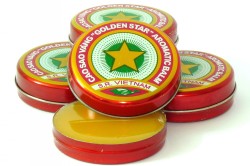 The nasal passages are lubricated with sea buckthorn oil, which has a preventive effect when a cold occurs. Pediatricians recommend to lubricate the child's feet with the “Zvezdochka” therapeutic balm for rhinitis. You can massage your baby and bury aloe or Kalanchoe juice in his nose. An effective remedy for the common cold is freshly prepared beetroot or carrot juice, diluted with boiled water in equal proportions.
The nasal passages are lubricated with sea buckthorn oil, which has a preventive effect when a cold occurs. Pediatricians recommend to lubricate the child's feet with the “Zvezdochka” therapeutic balm for rhinitis. You can massage your baby and bury aloe or Kalanchoe juice in his nose. An effective remedy for the common cold is freshly prepared beetroot or carrot juice, diluted with boiled water in equal proportions.
Juice from potatoes, beets and carrots has antibacterial properties. The resulting drink is diluted with water. The tool is applied 4 times a day. An anti-inflammatory effect is possessed by a decoction of chamomile or yarrow. When thick snot appears, it is not recommended to wrap up the child and heat the air.
The nursery should be regularly ventilated to create additional moisture. Clean, fresh and cold air creates unfavorable conditions for the vital activity of bacteria. In this case, moist air makes breathing easier. For additional humidification, special devices or a container with water are used. In winter, they are installed near a heating radiator.
To facilitate the baby's nasal breathing, wet cleaning is performed. It is impossible to bury breast milk in the nose with a cold. Otherwise, active reproduction of bacteria will begin. During sleep, parents should ensure that their head is in the most comfortable position for breathing. When prolonged runny nose the child's pillow or headboard is raised.
In the absence of temperature, the baby is bathed before bedtime. The water vapor makes breathing easier by helping to loosen thick mucus. Since the secret in question is a symptom of ARVI or ARI, the child needs an abundant drink. If the baby is 5-6 months old, then he is given boiled water between feedings. Children over 2 years old are given compote and rosehip decoction. Prevention of thick secretion consists in hardening the body, frequent walks in the fresh air and proper nutrition.
It is unpleasant when the nose is so stuffed up that it is impossible to get rid of snot in the usual way. “I blow my nose with all my strength, but nothing happens, the patient turns to the doctor. Thick snot was able to block up the nasopharynx so that it is difficult to breathe! " Normal nasal discharge is transparent and moderately viscous. Viscous snot is a favorable environment for bacteria to multiply, expand the inflammatory process, and spread the infection to other organs of the body. An increase in the production and an increase in the viscosity of snot cause negative factors:
- respiratory diseases;
- damage to the respiratory tract by viruses, bacteria;
- hypothermia of the body;
- smoking;
- allergy;
- decreased immunity.
Every patient wants to get rid of thick snot. If they are not blown out by what to treat?
Do not rush to overload the body medicines... They are unlikely to help right away, but an adverse side effect is guaranteed. You should also remember about contraindications:
- Allergy sufferers are better off not experimenting with taking herbal infusions, decoctions, if the allergic reaction to them is not known in advance.
- Hot tubs should be avoided for cores.
- Asthmatics prone to nosebleeds should not be inhaled.
- If the child has snot in the nasopharynx and does not blow out, if possible, do not try to act on your own, call a doctor immediately.
With this in mind, we are taking priority measures. If you have a stuffy nose, the main cure for a cold is warmth.
To keep warm:
- We drink hot tea, preferably green. We eat it with raspberry jam, grated raspberries. We make tea with ginger, lemon, we eat honey to sweat.
- We take a hot bath. Add a few drops of essential oils to the water: fir, eucalyptus, lemon. After the bath, we wrap ourselves in a blanket and sweat.
These funds will help at the very beginning of the disease. On the fourth day of a stuffy nose, they are already useless.
Others effective means warming up the body:
- Compresses. Ingredients: vodka, vegetables, black radish, beets, onions of your choice. Grind the vegetables with a grater. We moisten a handkerchief, a piece of gauze with vodka, wrap a handful of chopped vegetable in it. We wrap it with cellophane and a scarf, put it on the bridge of the nose.
- Heat sand, salt in a frying pan until haze appears. We fall asleep in a bag, wrap it in a scarf, put it on the bridge of the nose.
- Clay. We make two cakes out of it, each for one side of the nose. We heat in the oven until hardened, put on both sides of the bridge of the nose.
- Cook the eggs. Apply to the nose without wrapping.
Duration of warming up daily for an hour, preferably before bedtime. If you feel pain, heat, burning, itching, we stop the procedure.
Flushing
If after these procedures they are not blown out by what to treat? Washing - the most quick way get rid of snot. The goal is to forcefully flush mucus from the nose, moisturize the mucous membrane and bring down inflammation. The liquid is injected into the nose simply with a palm, a rubber pear or a syringe. We fold the palm with a boat, pour liquid into it, squeeze one nostril, take a full breath with the other. As you exhale, blow out the liquid from the other nostril. We buy a small rubber pear. We inject liquid into one nostril, blow it out from the other. We buy a disposable syringe. We remove the needle from it, grease the tip with Vaseline. We collect liquid into a syringe and follow a similar procedure. These actions are best done in the bathroom or above the sink.
For washing apply:
- Mineral water. The best option is Borjomi.
- Physiological solution (buy at the pharmacy).
- Salt solution (0.9%). We put two teaspoons of salt per liter of water. You can add a quarter teaspoon of baking soda, two to three drops of iodine to the solution.
- Vegetable juice diluted to a very low concentration (beetroot, carrot, garlic, onion).
- Kalanchoe, aloe juice diluted to a very low concentration.
- Water with the addition of essential oils: fir, mint, ginseng, lemon.
- Seawater solutions: Salin, AquaMaster, Aqualor, Physiomer, Morenazal.
Preparations based on sodium chloride, seawater act only on the mucous membrane. They do not penetrate into the body, therefore they do not cause side effects. The rinsing solution should be moderately hot. It is better to rinse your nose every two hours at first. If swelling makes the procedure difficult, put a vasoconstrictor in the nose.
If snot is not blown out by a small child who cannot do this on his own, do not try to rinse his nose yourself. Call your doctor.
Additionally
To help a runny nose go away, keep an eye on your environment.
- The air temperature in the apartment should be about 22 degrees, humidity 60% or more. We ventilate the room regularly. Dry air heat the patient leads to drying out of the nasal mucosa, with an increase in the viscosity of the discharge, they lose the ability to neutralize the infection.
To increase humidity, we hang wet towels over the batteries. We buy an aquarium, a special fountain.
- We constantly drink a lot of tea, herbal decoctions, and other warm liquids to thin the mucus.
- We keep our feet warm. During the illness we stop walking around the house barefoot. Only in warm socks, in which it is good to pour mustard powder.
After taking urgent measures, visit an otolaryngologist and find out the cause of the common cold. It is clear that if he is of an allergic nature, he will have to be treated in a completely different way than with an infection. Antihistamines are prescribed for allergies. Therapy for viral infections differs from the treatment for bacterial ones, in each case the doctor prescribes antiviral or antibacterial drugs... Mucolytic agents are prescribed to liquefy snot.
Antibiotics, hormonal drugs used for severe disease in exceptional cases as prescribed by a doctor.
More often than others for treatment bacterial rhinitis use drugs in the form of sprays, drops, such as Chlorophyllipt, Protargol, Miromistin, Pinosol. If the infection has engulfed the oropharynx, with complications, sinusitis, inhalation with the antiseptic dexamethasone is effective, which acts exclusively on the mucous membrane, without penetrating through it.
In the form of sprays, medicinal preparations are produced based on sea \u200b\u200bsalt for adults: No-salt, Humer, Aqua Maris, Morimer. Similar products for children are marked with the word "baby". They are used to moisturize the nasal cavity after cleaning it throughout the day. The use of such drugs is contraindicated, side effects does not have.
Vasoconstrictor drugs
Popular medications of vasoconstrictor action tizin, naphthyzine, otrivin, nasol, oxymetazoline, phenylephrine, naphazoline, tramazoline, xylometazoline and the like are actually none therapeutic effect Dont Have. It is advisable to use them for short-term removal of edema only in cases when the congestion of the sinuses creates obstacles to the administration of the drug, flushing of the sinuses They cause disturbances in the activity of the vascular nerves, their use for more than five days in a row is addictive, the body is insensitive to them, which leads to a chronic rhinitis, which is treated much more complicated than the usual rhinitis accompanying any disease.
When correct treatment runny nose resolves in four to five days, often on the second day. If you start it, complications are possible: sinusitis, otitis media, vasomotor rhinitis. We constantly maintain the hygiene of the nasal cavity, use a handkerchief.
In contact with
A runny nose for a child is not uncommon, this unpleasant symptom always accompanies colds and usually passes after a week of adequate treatment. However, it also happens that a child has a stuffy nose, transparent ones stand out, but there are no other symptoms of a cold.
Perhaps the reason for this pathological condition is an allergic reaction or more serious diseases of the respiratory system, in any case, in order not to aggravate the baby's condition, the problem must be dealt with. A pediatrician or otolaryngologist should treat viscous snot for children after identifying the cause that provoked the pathological process. Self-medication is unacceptable here.
The mucous membrane of the nose secretes (snot), the main function of which is to protect it from drying out and harmful microorganisms.
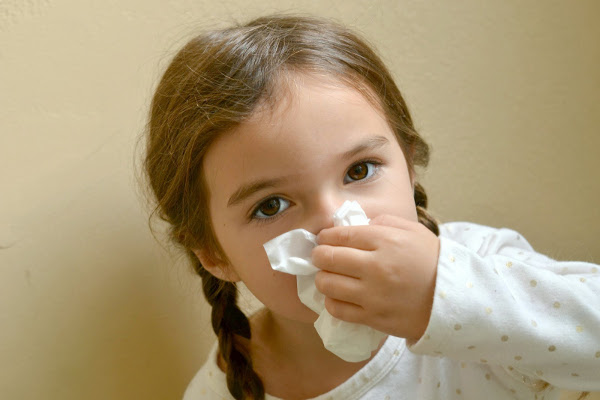
The nose is the body's first defense barrier against viruses, bacteria, and allergens.
Antiseptic
Nasal secretion acts as an antiseptic, destroys pathogenic microorganisms, and, thanks to the ciliated epithelium, which covers the entire nasal mucosa, removes the waste material outside. This is how a runny nose appears.
Moisturizing
Normally, a person's nose produces a small amount of liquid transparent mucus, which moisturizes and protects the lower respiratory tract from foreign objects (dust, dirt). But as soon as the "enemy agent" enters the body, the volume of muconasal secretion increases significantly, a struggle begins.
Also read:
A runny nose at the initial stage is always accompanied by transparent liquid snot, which gradually become a thick consistency, which indicates the recovery of the child. If the disease is caused by a bacterial infection, then the muconasal secretion may acquire a yellow or green tint (the color depends on the severity of the disease).
A thick yellow-green runny nose, in which a child has a stuffy nose, should alert parents, as this may be a symptom of sinusitis (sinusitis, frontal sinusitis). The disease should be treated urgently, since the disease quickly becomes chronic and provokes complications.
Why thick
Snot is a mucus base, which is made up of water, salt and mucin protein. It is mucin that is responsible for the consistency of nasal secretions. So, with the usual viral infection the child has a profuse runny nose, the consistency of the discharge is liquid, they are transparent and easily flow out of the nasal passages. A few days before recovery, the mucus stops flowing out, becomes thick, but at the same time remains transparent (sometimes it can be somewhat cloudy).
Bacteria
If the cause of the disease is a bacterial infection, then more mucin protein is needed to fight it. The nose, or rather the mucous membrane, begins to actively develop it - now they become thick and acquire a characteristic shade (yellow or green).
Allergens
In addition to a bacterial or viral infection, allergens can provoke a thick runny nose in a child, while the baby may also have a stuffy nose, watery eyes, and sneezing. Usually with allergies, the nasal discharge is clear, but along with this, they can acquire a milky hue, have a foamy consistency and sticky.
Dry air
Quite often, a viscous rhinitis in children is observed during the heating season. Insufficiently humidified air leads to drying out of the nasal mucus - at first it becomes thick, and then completely dries up, forming crusts. Also, the child's nose is a kind of indicator indicating the amount of moisture in the body. Transparent viscous snot may indicate a lack of fluid, resulting in dysfunction of the body.
Lung disease
Transparent viscous snot can indicate more serious diseases, such as bronchitis or pneumonia, especially often in children of the first year of life. Therefore, parents should not rely on themselves, self-medicating - a qualified doctor should treat the disease.
How to get rid of
Since thick snot greatly complicates the child's nasal breathing, they must be disposed of and should be done correctly.
Liquefaction
Initially, a viscous runny nose should be diluted - drip a few drops into the baby's nose saline Aquamaris, Aqualor, Humer, No-Sol. Ordinary will also work. saline or a weak decoction of medicinal herbs (chamomile, St. John's wort, others). Older children are advised to rinse their nose and then get rid of mucus by blowing their nose.
Cleaning
About children younger age do this - after instillation, they wait from 5 to 10 minutes, then, using an aspirator or gauze flagella, remove the softened secretion from the nose. Some parents use an ordinary syringe (without a needle) as an aspirator, but then you need to firmly fix the child's head so as not to injure the delicate mucous membrane of the nose.
These manipulations help free the baby's nose from viscous mucus, but do not eliminate the cause that provoked the runny nose. It is imperative to treat the disease. Based on the nature of the disease, the doctor prescribes an antiviral, antibacterial or antihistamine agent, mainly for local use. Drops of vasoconstrictor action can also be prescribed, with their help, nasal breathing can be normalized. You cannot prescribe medications on your own.
Prevention
To avoid thickening of nasal mucus, parents should remember:
- the optimum air humidity in the room is 50-60% - install a container with water on the heating radiator (at least 1.5 liters should evaporate daily);
- regular wet cleaning will help prevent an allergic reaction - quite often house dust, wool, down, feathers act as provocateurs of allergies;
- drinking plenty of water - this is life, give your child more fluid, especially during illness; water procedures - if the baby does not have a temperature, be sure to bathe him, the steam improves nasal breathing and prevents mucus from thickening.
One more thing - do not use traditional medicine, breast milk, beetroot and carrot juice will not relieve the crumbs of viscous snot, but, on the contrary, will provide a favorable environment for the reproduction of pathogenic microorganisms. A qualified doctor should be involved in treating children.
Attentive parents who are anxious about the well-being of their baby have a lot of reasons for concern. Serious and not very.
One of these reasons is a runny nose. It is very difficult for parents of an infant to distinguish respiratory manifestations from a physiological rhinitis, the launch of adaptive mechanisms from the first symptoms of an onset disease, and to understand when it is necessary to treat the manifestations of rhinitis, and when it is not worth avoiding the use of medications. And the very treatment of young children is not an easy question even for experienced parents.
The reason for the appearance of thick discharge from the nose
Children, especially infants, are prone to rhinitis at least as adults and even more. This is justified for several reasons:
- physiological features of the structure of the nasal passages of the baby;
- immaturity of the immune system;
- imperfection of heat exchange.
The mucus thickens with an increase in the content of mucin (protein) in the secreted. It is this protein that is responsible for the structural characteristics of mucous secretions. Thickening of the discharge is a method of protecting the body from an infectious agent. Thick snot in a child tightly closes the nasal passages, preventing pathogenic agents from moving deeper.
The negative aspect of such a reaction is difficulty in nasal breathing, which leads to hypoxia, deterioration in general well-being, increased fatigue, sleep disturbances, and headaches. Of course, a baby cannot complain about headachefor example, but he becomes moody, refuses to breast, or bottle.
The following factors are provoking the production of mucin:
- hypothermia;
- mechanical respiratory irritants;
- allergens.
Therefore, exacerbation of the rhinitis accompanying thick discharge is seasonal.
For the correct diagnosis, not only the density, but also the color of the nasal mucus is very important:
- Viscous white mucus is a sign of the final stage of respiratory disease and the success of treatment.
- Thick snot in a child or mucus with an admixture of blood may be evidence of the child being in unfavorable conditions for him (in a room with overheated, stale air). The appearance of blood can be a sign of thinning of blood vessels with excessive use of vasoconstrictors, or frequent straining in older children when trying to get rid of thick mucus in the nose.
- A thick green discharge indicates an advanced form of the infectious process.
- Thick, yellow-green mucus can be a sign of allergic rhinitis complicated by a bacterial infection. \\
- Yellow-brown nasal mucus in children is rare - a sign of a serious illness, up to oncological processes.
Stages of rhinitis in children under one year of age with respiratory infections
It is customary to distinguish three stages of the process of formation of nasal mucus with respiratory diseases baby:
- the expiration of abundant transparent discharge;
- the formation of thick mucus from a yellow-green or milky white color;
- crusting.
The first stage marks the beginning of the infectious process.
If the process affects the nasopharynx, the body temperature rises, the baby becomes capricious, refuses to eat and does not sleep well, it is imperative to call the pediatrician at home.
This condition requires immediate and serious treatment. If the disease proceeds very easily, the body temperature may not be, the general condition of the child does not deteriorate significantly, the transparent snot thickens within several days, acquiring a white color. This indicates the beginning of the recovery phase. In this case, treatment may not be required or may be limited to rinsing (instilling) the spout with seawater-based drops.
At the second stage of rhinovirus infection, the mucus becomes thick and white, and if a bacterial infection is attached, it becomes yellow-green. This is a sign of the beginning of recovery. However, the period when thick snot is released in a child under one year old is a difficult and unpleasant stage. Children under one year old do not know how to blow their nose, and cannot remove mucus from the nose on their own. During this period, it is uncomfortable for the baby to eat and sleep, he often drops his chest or wakes up, cries and is capricious.
In the third stage, mucus is not secreted with increased intensity. In the nasal passages, crusts are formed, which are tightly adhered to the mucous membrane of the nose. The presence of such crusts is not as dangerous as thick mucus, but very unpleasant. The crusts irritate the nasal mucosa, so the baby can snore heavily and hoarsely, especially during sleep. During this period, a runny nose is no longer required to be treated, and the crusts are removed by means of cotton flagella dipped in sterile vaseline oil.
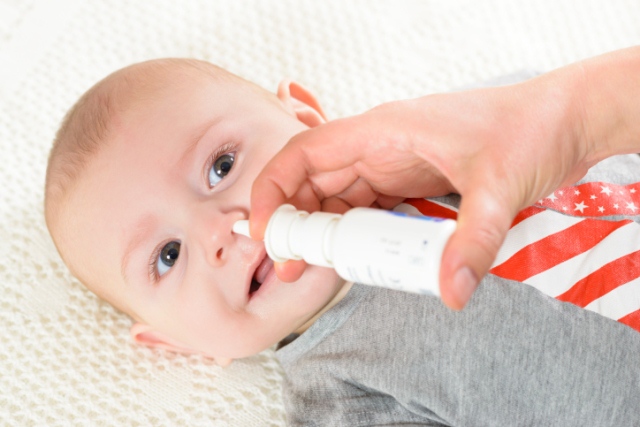
The main danger of excessive mucus production for a baby under one year old
Firstly, the baby's general condition and the state of the nervous system worsens due to sleep disturbances and the inability to eat normally.
Secondly, flowing down back wall pharynx, mucus containing harmful bacteria can contribute to the transfer of infection to the throat and lead to inflammatory process... And to treat it is not only and not so much rhinitis.
Thirdly, thick mucus, slowly flowing down the back of the throat, can cause gagging in infants.
Fourthly, rhinitis can contribute to the entry of bacteria into the paranasal sinuses, this is especially dangerous for babies, since their nasal passages are narrowed, this contributes to the increased reproduction of harmful microflora.
Therefore, the question of how to cure rhinitis for your child is by no means idle. However, self-medication is not recommended.
Many medications have contraindications, they are not suitable for every child. And if they are not used correctly and for a long time, they can cause an "addictive effect" and a deterioration in the condition of the nasal mucosa (edema and shortness of breath, as well as thinning of the vascular wall of the nasal mucosa).
Fundamentals of rhinitis therapy at the stage of thick secretion formation
It is rather troublesome to treat a runny nose at the stage of thick secretion. The principle of treating a common cold at this stage is justified by the fact that a thick secret needs to be liquefied before removal. Therefore, the treatment procedure takes place in several stages:
- thinning mucus;
- removal of softened secretion;
- antibacterial or other therapy recommended by a doctor.
At the first stage, medications made on the basis of sea water are used for treatment, which, as a rule, have no contraindications or sterile saline. After instilling one of these substances, you need to wait 5 minutes to achieve the desired effect.
The child himself cannot get rid of the thick secret, even after it has been liquefied. Therefore, the removal of mucus for babies is carried out by adults with the help of cotton flagella, an aspirator or a small medical syringe (pear). Then, as a treatment, nasal drops prescribed by a doctor are applied.
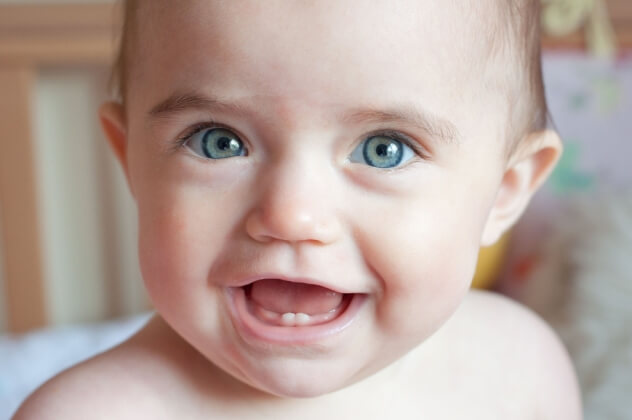
If an allergy caused a runny nose, and a thick secret appeared due to the addition of a bacterial infection, antihistamines and sorbents can be prescribed together with antibiotics. In severe cases, your doctor may recommend corticosteroids to treat allergies. And in any case, you need to try to rid the child of the influence of the allergen.
Non-drug measures
Treatment is more effective when parents rely not only and not so much on medication. The following measures will help the baby to recover as soon as possible and get rid of a cold:
- regular wet cleaning;
- frequent airing for 10-15 minutes;
- additional air humidification;
- with a bacterial infection, it is not recommended to drip mother's milk into the nasal passages, especially if thick mucus is formed, since being in a clogged with a secret for a long time, milk loses its bactericidal properties and serves as a breeding ground for bacteria;
- no need for the baby to additionally wrap, dress or cover;
- in case of a runny nose, the baby needs a position that allows him to breathe more freely (a raised head end of the crib or an additional pillow);
- you cannot additionally bathe the baby in hot water, you can bathe him in water that is comfortable for him before bed, if the body temperature is not elevated;
- if there is no temperature and the weather is comfortable outside, you need to walk with the child, the exception is allergic rhinitis (if the allergy is caused by plant pollen);
- with the formation of a thick nasal secretion, the child needs to be given water between feedings.
Be sure to coordinate any of your actions with the pediatrician. You should not treat the baby yourself.
